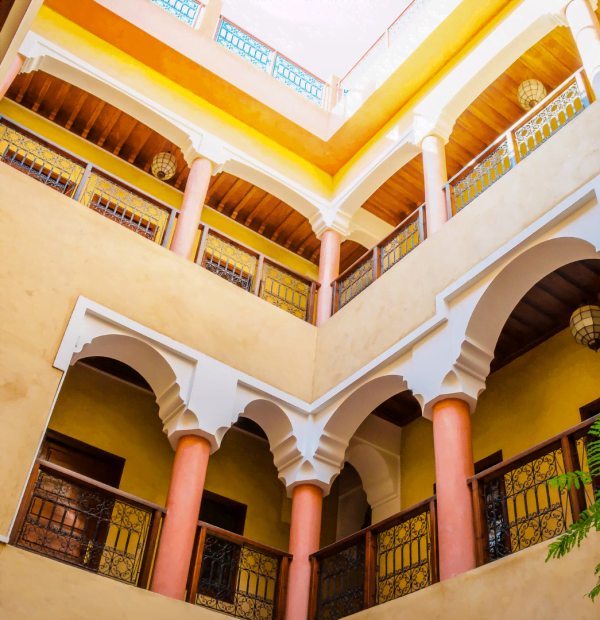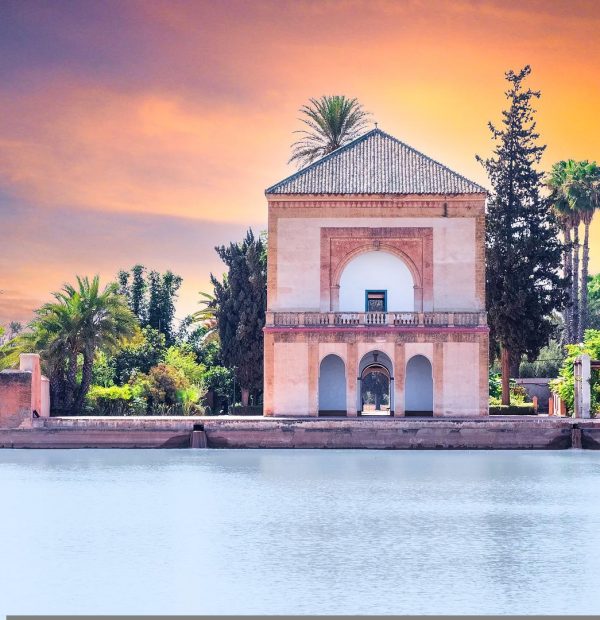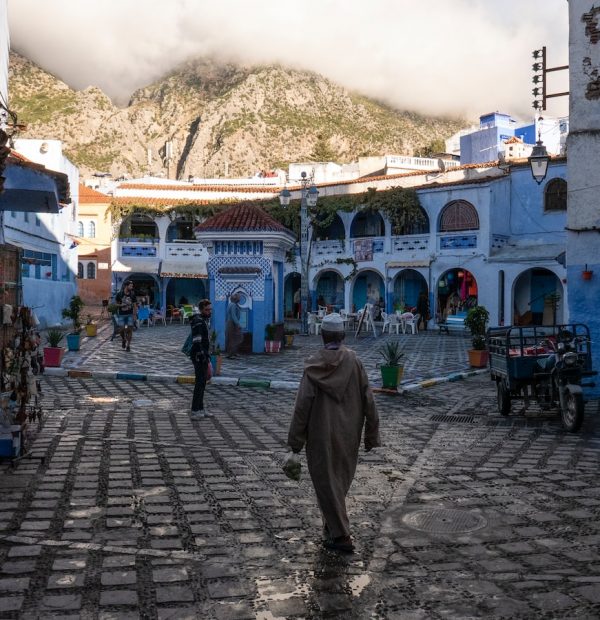FEZ
Fez

The city of Fez is located in the north-central part of Morocco. The city has a long and rich history, dating back to the 8th century. Fez was once the capital of Morocco and is now a UNESCO World Heritage Site. The city is known for its beautiful architecture, which includes the world’s oldest university, and its vibrant culture.
A brief history
Fez is the second largest city of Morocco after Casablanca, and the capital of the Fès-Meknès administrative region. It is located to the northeast of the country, on the right bank of the River Fez. The city was founded in the 8th century by Moulay Idriss I and quickly became a centre of trade and learning. Later, it became a capital under the rule of Idriss II, and expanded greatly under the caliphs who succeeded him. Today, Fez is still one of Morocco’s most important cultural centres, and is home to numerous mosques, madrasas (Islamic schools), fountains and gardens. It has been listed as a World Heritage Site since 1981.
The city today
Fez is the capital of the Fès-Meknès region in northern Morocco and is one of the four imperial cities of Morocco, along with Marrakesh, Meknes and Rabat. The Medina of Fez was declared a UNESCO World Heritage Site in 1981.
Fez was founded in the 8th century by the Idrisid dynasty. It served as a capital until the French Protectorate under The Treaty of Fez (1912), after which it became the capital ofmorocco.
The city has two parts; Fes el Bali, the medieval city dating from the 9th century, and Fes Jdid, the new imperial city founded by IDRISS I in AD 789. The Medersa Bou Inania is one of the most impressive monuments in Fes Jdid. Built between 1350–1356 byAbou Inan Faris, it is considered one of the finest examples of Marinid architecture.
The people of Fez
The people of Fez are a proud people. They are known for their hard work and their love of family. They are also known for their love of food and their hospitality. The people of Fez are known for their ability to get along with others and their willingness to help those in need.
The culture
Fez is a city in Morocco well known for its culture and heritage. The city has a population of over 1.1 million people, making it the fourth largest city in the country. The people of Fez are very proud of their culture and heritage, and this is evident in the way they live their lives.
The culture in Fez is a mix of Arab, Berber, and European influences. This can be seen in the architecture, food, music, and art of the city. One of the most famous things about Fez is its Medina, which is a UNESCO World Heritage site. This is because it is one of the largest and best preserved medieval cities in the world.
The people of Fez are extremely welcoming to visitors and are proud to show off their city. If you are lucky enough to visit Fez, you will be sure to have an amazing experience and come away with a deeper understanding and appreciation for Moroccan culture.
The economy
Fez has a long and rich history, and was once the largest city in Morocco. The city is now a UNESCO World Heritage site, and is well-known for its traditional architecture and vibrant culture. The economy of Fez is largely based on tourism, as the city is a popular destination for both domestic and international travelers. There are also many universities and colleges in Fez, which contribute to the city’s economy.
The sights of Fez
Fez is a Moroccan city full of culture and sights. The city is full of narrow streets, markets, and mosques. There are many things to see in Fez, and it is a great place to experience Moroccan culture.
The Medina
The Medina of Fez is the oldest and largest living medieval city in the world. The Medina is a UNESCO World Heritage Site and has been called “the largest human-made urban space in the world.” The Medina is home to approximately 9,000 residents and over 150,000 workers. The Medina is also home to over 600 mosques, 270 madrasas (schools), and numerous fountains.
The Medina is a labyrinth of narrow streets and alleyways that are lined with shops, residences, and places of worship. The streets are too narrow for cars, so the only way to get around is on foot or by donkey. The Medina is a bustling place full of life, and it’s easy to get lost in the maze of streets. But that’s part of the charm of the Medina – it’s a place where you can get lost in time and experience a way of life that has remained unchanged for centuries.
The Fes el-Bali
Fes el-Bali is the old city of Fes, Morocco. The first capital of Morocco, it was founded in 809 by the second caliph of Islam, al-Idrisi. This province covers an area of asking 190 hectares and has a current population estimated at 156,000 inhabitants. UNESCO designated Fes el-Bali a World Heritage Site in 1981.
The Fes el-Jdid
Fes el-Jdid is the newer of the two medinas (old city) in the Moroccan city of Fez. It was founded by the Marinids in 1276 as a royal citadel, residence and palace. Unlike the older Fes el-Bali, it is not surrounded by walls. It is generally less crowded and more peaceful than the older Medina.
There are a number of notable buildings in Fes el-Jdid, including the Medersa Bou Inania, which was built in 1350–1355 and is one of the finest examples of Marinid architecture; the Dar al-Makhzen (palace); and the Great Mosque of Fes el-Jdid, which was built in 1315 but has been restored several times since then.
The quarters (or districts) of Fes el-Jdid are: Quarter of Saffarin, Quarter of Kifane, Clockmakers’ Quarter (Fes el-‘Attarin), Jews’ Quarter, Mellah (Quarter of Sebbata), Andalous Quarter and Dar Seffarine Quarter.
Getting around Fez
Fez is a city in Morocco and is the capital of the Fes-Meknes region. It is located in the north-central part of the country, on the right bank of the Fez River. The city has a population of 1,200,000 (2020), making it the fourth largest city in Morocco after Casablanca, Rabat, and Marrakesh.
By foot
Walking is the best way to get around Fez Medina. This UNESCO world heritage site is a labyrinth of narrow streets and alleyways, and cars are not allowed in most of the area. The best way to get oriented is to pick up a map from your hotel or a souvenir shop, or better yet, hire a local guide.
If you want to explore on your own, be sure to wear comfortable shoes and watch your step—the uneven cobblestone surfaces can be treacherous, especially when they’re wet. To avoid getting lost, it’s best to stick to the main thoroughfares and only venture into the side streets when you have a specific destination in mind.
By public transport
Fes El Bali is the old part of Fez, and is best explored on foot. However, if you want to get around Fez quickly, or cover more ground, there are a few different options for public transport.
The cheapest way to get around Fez is by petit taxi. These are small, yellow cars that can seat up to three people. You can hail a petit taxi anywhere in the city, and they will use the meter. A journey across town should cost around 10-15 dirhams.
If you want to avoid the traffic and heat of Fez, you can take a ride on one of the city’s ubiquitous donkey carts. These carts can be found all over Fez, and are a cheap and cheerful way to get around. A ride from one side of Fes El Bali to the other should cost around 5 dirhams.
For something a little more comfortable, you can take a ride in a caleche. These are horse-drawn carriages that seat up to six people. Caleches are a bit more expensive than petit taxis and donkey carts, but they offer a unique way to see the city. A ride across town in a caleche will cost around 20-30 dirhams.
By car
cars are the best way to get around Fez. The city is incredibly congested, particularly in the Medina, and parking can be a challenge. In addition, many of the narrow streets in the Medina are too small for cars. With a car, however, you’ll be able to explore parts of Fez that are difficult to reach on foot or by public transportation. Also you can check out our Morocco tours from Fez to save the hassle of transportation.




